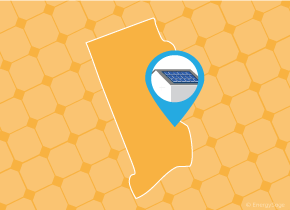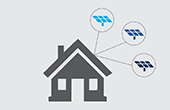History of solar policy in Rhode Island
Rhode Island punches well above its weight on solar: although SEIA reported in 2018 that the state ranks 34th in the nation with about 120 megawatts (MW) of installed solar energy capacity, Rhode Island has achieved half of that capacity in 2018 alone. The rapid growth of the industry in-state did not happen overnight, though, as it has taken years of state legislation to make Rhode Island an ideal solar market.
Rhode Island’s first major solar policy was passed in 1981, when the state implemented Solar Easements regulations. Although the policy doesn’t focus on financial incentives, it recognized solar energy usage as a property right and ensured that proper sunlight is made available to those who operate solar-energy systems.
Rhode Island next passed solar policies in 1996, when the state’s electric-utility restructuring legislation required utilities to create one of the first public benefits fund in the nation. Known as the Rhode Island Renewable Energy Fund (REF), the funding for this organization comes from a $0.0003 per kWh surcharge on resident’s utility bill and is administered by CommerceRI.
At the turn of the century, Rhode Island made major strides in clean energy by enacting a renewable portfolio standard (RPS) in 2004. Across the country, state energy requirements have been instrumental to the development of clean energy. Officially titled the Renewable Energy Standard (RES) in Rhode Island, legislators created a top-rated program requiring utilities to supply 38.5 percent of their electricity sales with renewable resources by the end of 2035.
The next significant solar policy to pass is the state’s 2011 net metering program, which makes solar more financially attractive to Rhode Island residents. Throughout the nation, net metering programs have allowed residents to send surplus net energy to the electric grid and receive compensation for it on their energy bill. In Rhode Island, RI Energy offers the top program in the state and every utility credits net surplus at the avoided-cost rate. In 2016, policymakers extended the reach of net metering by raising the capacity limit of the program to 10 MW, as well as by approving community remote net metering so that residents can still use solar without having to install their own installation.
Beyond these policies, Rhode Island has developed a few other notable financial incentives to make solar more accessible to everyone. The first of these were the Small-Scale Solar Grants and Commercial Scale Renewable Grants policies, which were created in 2013 and use the Renewable Energy Fund (REF) to compensate residents for going solar. The creation of the Renewable Energy Growth Program in 2014 made solar more affordable by providing a feed-in tariff of 32.25 cents for each kilowatt-hour they sell to the grid for the first 15 years of their system, which is much higher than the 19 cents residents would otherwise receive. Finally, additional solar incentives include the Sales Tax Exemption and Property Tax Exemption, which help reduce the overall costs of solar installation.













